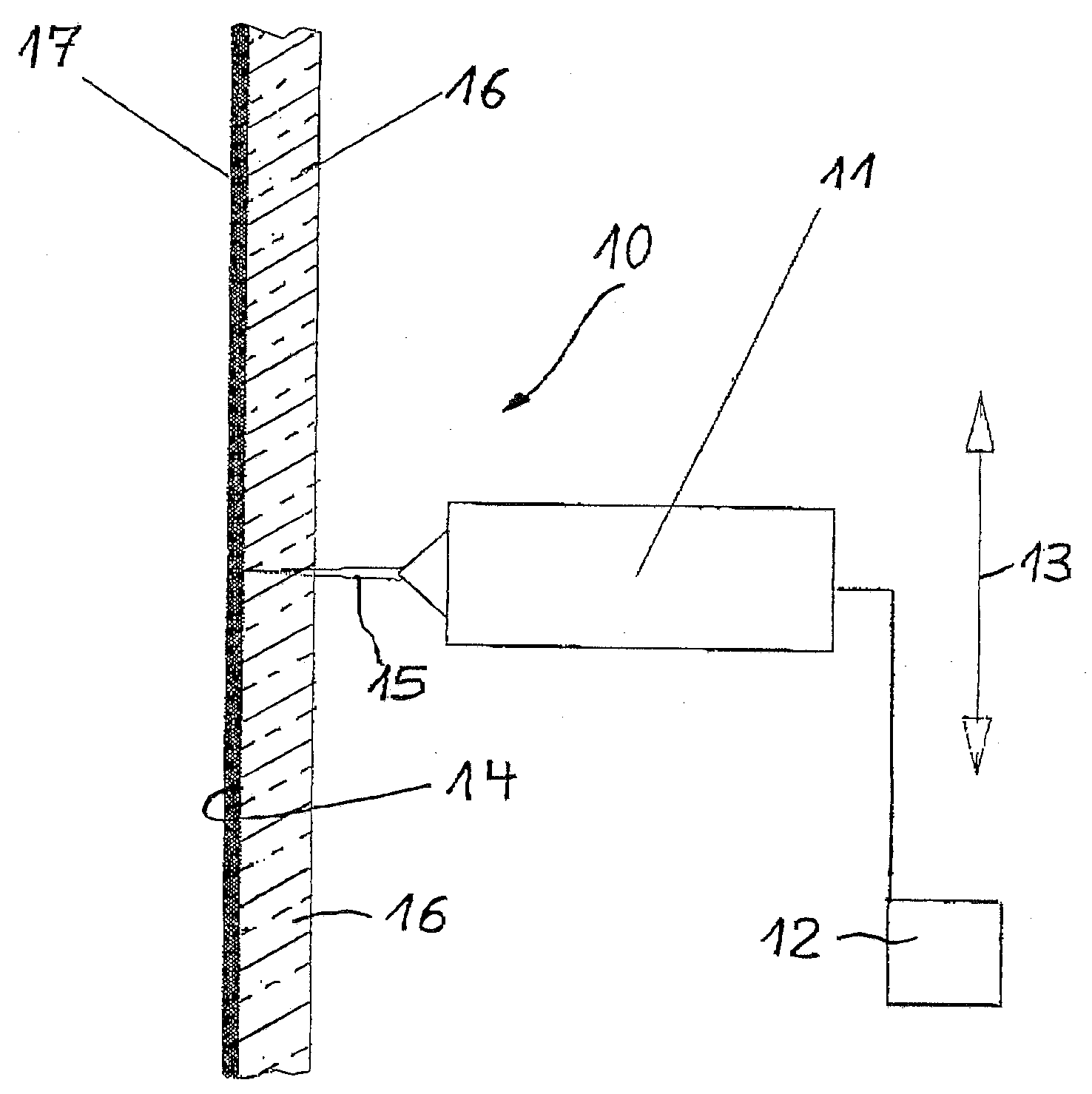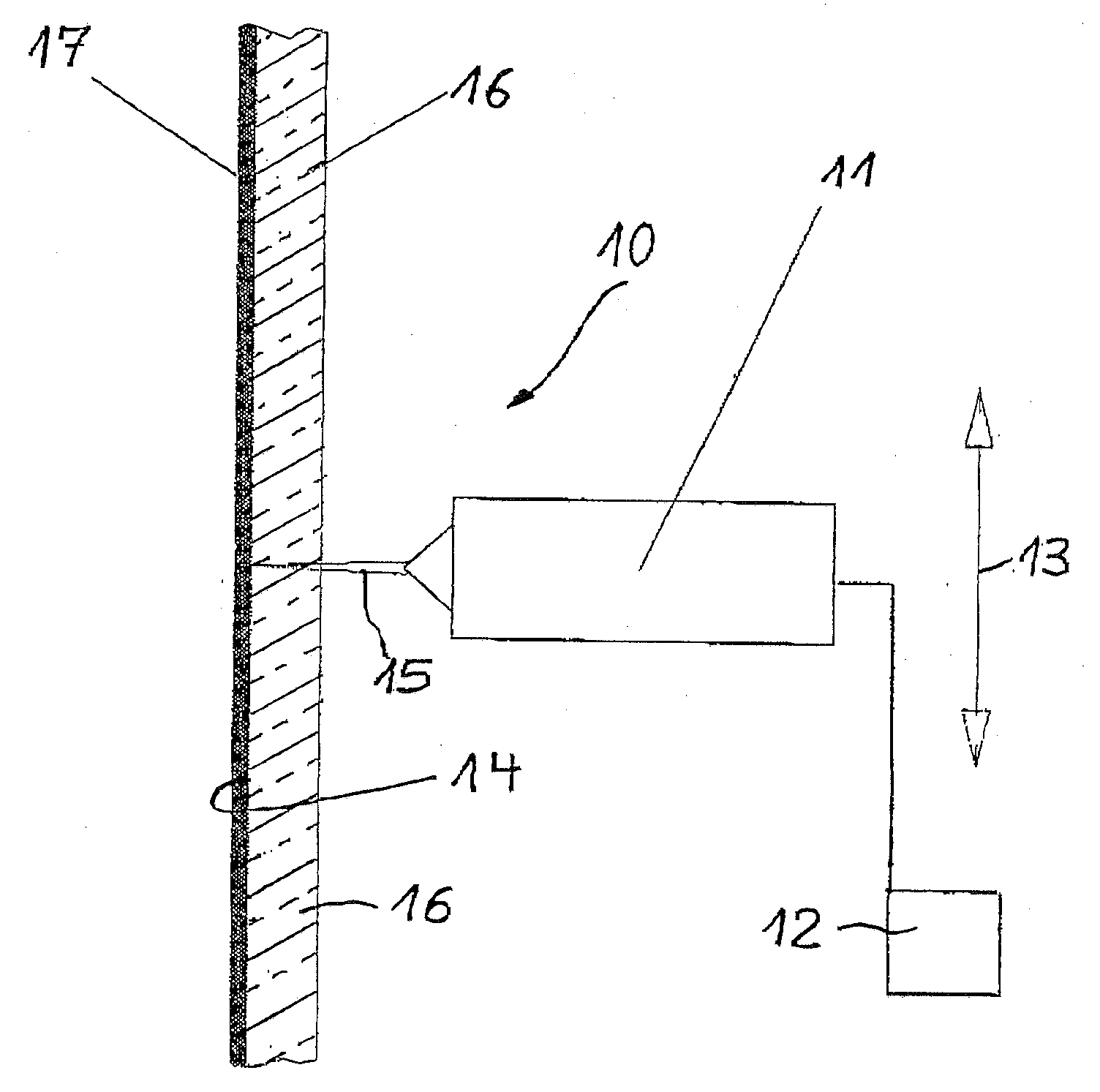Method for generating color information, such as motifs, on a substrate made of glass in particular
a technology of color information and substrate, applied in the field of generating color information, such as motifs, can solve the problems of inability to mechanically remove ink from the substrate in order to create motifs, damage to the substrate, scratching and damage of the substrate,
- Summary
- Abstract
- Description
- Claims
- Application Information
AI Technical Summary
Benefits of technology
Problems solved by technology
Method used
Image
Examples
Embodiment Construction
[0011]In detail, the device 10 has at least one high-energy beam generator in the form of a laser beam generator 11, which is moved by means of an actuating and control device 12, indicated only schematically, in the direction of the vertical arrow 13 and as needed transversely to that, in such a way that its laser beam 15, focused at a face 14, writes the desired information, such as motifs, on this face 14.
[0012]This face 14 is the side of a substrate 16, made in particular of glass, that faces away from the laser beam generator 11. A ceramic ink in the form of at least one color coat 17 has been applied to the full surface of this face 14 of the substrate 16 made in particular of glass, for instance by being rolled or printed onto the face 14 of the substrate 16. After this application, the ink 17 has been dried by means of thermal action, in particular infrared action, which is done in a single-pass infrared oven. In this state after the drying of the ink 17, the substrate 16, w...
PUM
 Login to View More
Login to View More Abstract
Description
Claims
Application Information
 Login to View More
Login to View More - R&D
- Intellectual Property
- Life Sciences
- Materials
- Tech Scout
- Unparalleled Data Quality
- Higher Quality Content
- 60% Fewer Hallucinations
Browse by: Latest US Patents, China's latest patents, Technical Efficacy Thesaurus, Application Domain, Technology Topic, Popular Technical Reports.
© 2025 PatSnap. All rights reserved.Legal|Privacy policy|Modern Slavery Act Transparency Statement|Sitemap|About US| Contact US: help@patsnap.com


